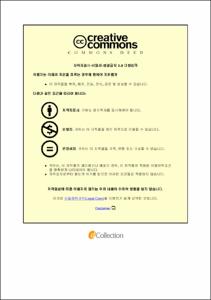Conductive polymer composite (polypyrrole, MXene) used as fillers for water-based binder on electrochemical double-layer capacitor electrode and lithium-ion battery
- Abstract
- In view of global warming effect and the depletion of fossil fuels, the development of efficient energy storage and conversion devices are highly recommended. Besides, electrochemical energy storage devices are gaining rising importance due to applications in electric vehicles (EV) and hybrid electric vehicles (HEV). Lithium-ion battery (LIB) has high energy density and give attractions to many researchers. Thus, it is widely used in popular electronics devices such as cell phones, laptops, etc. For reach a higher capacity, many active materials have been studied, such as graphite and other carbonaceous materials, Si, Al, Sn and so on. Supercapacitors are widely used for EV, HEV braking and power supply system, memory backup for portable electronics, and other high current demanding applications by their high-power density. Among the supercapacitors, the electrochemical double-layer capacitor (EDLC) is the most studied. EDLC can reach a high energy density by its active material large surface area. Thus, many researchers studied on increasing the active material surface area. However, there is less attention was paid to the binder even though it played a critical role on the performance of lithium-ion batteries, and supercapacitors. Thus, in this study, we introduced conductive polypyrrole and new 2D material MXene as fillers and added to high adhesive water-based poly (butyl acrylate/acrylonitrile) (PANBA) and Poly(methyl methacrylate- butylacrylate-methacrylic acid/acrylonitrile-butylacrylate-styrene) (PMAA-BA-MMA/AN-BA-St)and and applied on lithium-ion battery and supercapacitors, respectively. These water based conductive polymer named as PANBA-PPyX, MX/PANBA, MX/CS and MX/HCS were synthesized via emulsion polymerization, and they were used as binder on anode electrodes for LIB and electrodes for EDLCs in CR2032 type coin cells. Both physical and chemical tests had been studied and confirmed that PANBA-PPyX and MX/PANBA were high adhesive, good conductive, better capacity retention environmentally friendly water-based binder for LIB and EDLCs.
In PANBA-PPyX study, we use it for EDLC electrodes first. The use of the new PANBA-PPyX binder increases the specific capacitance of the EDLC electrode up to 109.7 F g−1 from the 101.0 F g−1 value of the nonconductive PANBA-containing EDLC electrode at 10,000 cycles. This is mainly attributed to the better dispersion and lower electrical resistance of the PANBA-PPyX binder without losing the thermal, ion transport, and binding characteristics of the PANBA. For PANBA-PPyX binder applied on LIB study, The electrochemical performance of the conductive copolymers as a binder for the Li4Ti5O12 (LTO) anodes of lithium-ion batteries was superior to the non-conductive PANBA binder. The LTO electrode containing the PANBA-PPy4 binder, which was copolymerized with 4 g of pyrrole in 30 g of PANBA, had lower charge transfer and electrical resistance and thus better initial discharge capacity, coulombic efficiency, and capacity retention during the charge/discharge process at a 1 C current rate than the other electrodes containing the other conductive PANBA-PPy binders and non-conductive PANBA binder. In contrast, PANBA-PPy2 showed remarkable performance in the high current rate cycling test: discharge capacities of 152 mAh g−1 and 136 mAh g−1 at 5C and 10 C, respectively. This is because PANBA-PPy2 has stronger adhesion capability than PANBA-PPy4 that allows it to endure the impact caused by the high current density.
In MX/PANBA binder applied on EDLCs study which is a first report of an in-situ polymerization method to make a conducting composite binder with enhanced mechanical, adhesion, and electronic conducting properties. An EDLC containing electrodes of activated carbon and MXene clay/PANBA composite binder shows a high specific power of 8510 W kg-1 with a high specific energy of 23.6 Wh kg-1. This is a significant improvement over EDLC electrodes containing only activated carbon and PANBA. The improved performance is attributed to the binder’s enhanced conductivity and toughness due to improved interactions among the electrode components. Moreover, it shows prior performance when MX/PANBA binder applied on LTO anode for LIB as well.
In MX/CS and MX/HCS binder applied on EDLCs studies, a series physical tests and electrochemical tests have been conducted. And the results approved that they can be used as potential water-based binder for energy storage devices since their good mechanical property and adhesive property.
Overall, both the polypyrrole and MXene can be used as the conductive filler for polymer composite with polymer matrix PANBA, core-shell and hollow core-shell polymer matrix. The emulsion polymerization is an effective way to synthesis polymer composite at the present of fillers. The addition of polypyrrole and MXene can increase not only polymer matrix’s conductivity obviously but also can improve the composite polymer matrix’s mechanical property, such as relative toughness. When they used as binder for energy storage system, they can show good electrochemical stability. There is not any chemical reaction happened in a wide voltage range. In addition, the study of conductive polymer binder can help to decrease the charge transfer resistance and to increase the discharge capacitance of EDLCs resulting in improve the energy density and power density of energy devices. It is necessary to develop different properties of binder by different applications. Therefore, for increasing the fast charge discharge properties of binder, it is an imperative study to develop the conductivity of binder by using the various conductive fillers and making them into polymer composite.
- Issued Date
- 2021
- Awarded Date
- 2021-08
- Type
- Dissertation
- Keyword
- conductive binder; lithium ion battery; EDLCs
- Alternative Author(s)
- Yanchunxiao Qi
- Affiliation
- 울산대학교
- Department
- 일반대학원 화학공학전공
- Advisor
- 오은석
- Degree
- Doctor
- Publisher
- 울산대학교 일반대학원 화학공학전공
- Language
- eng
- Rights
- 울산대학교 논문은 저작권에 의해 보호받습니다.
- Appears in Collections:
- Chemical Engineering > 2. Theses (Ph.D)
- 파일 목록
-
-
Download
 200000500606.pdf
기타 데이터 / 6.73 MB / Adobe PDF
200000500606.pdf
기타 데이터 / 6.73 MB / Adobe PDF
-
Items in Repository are protected by copyright, with all rights reserved, unless otherwise indicated.